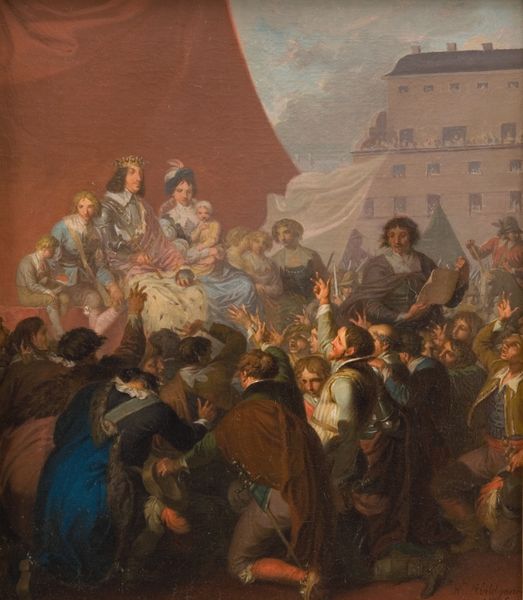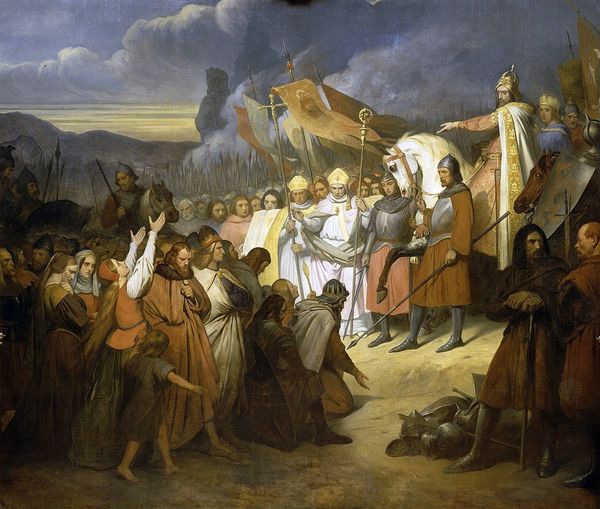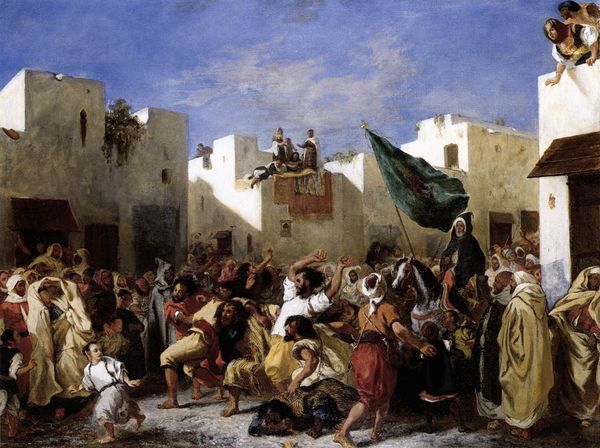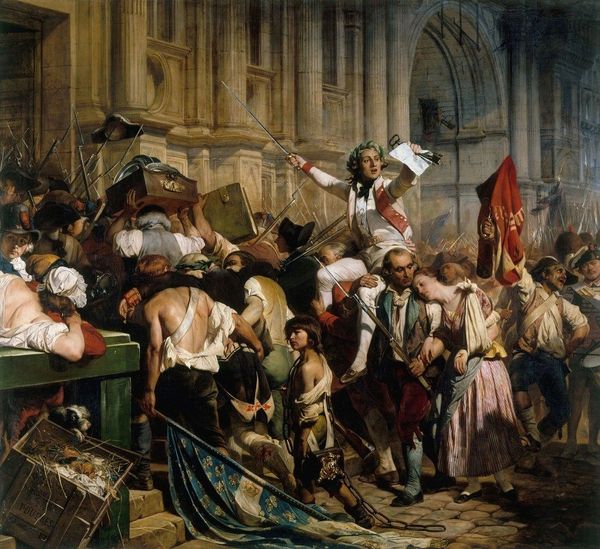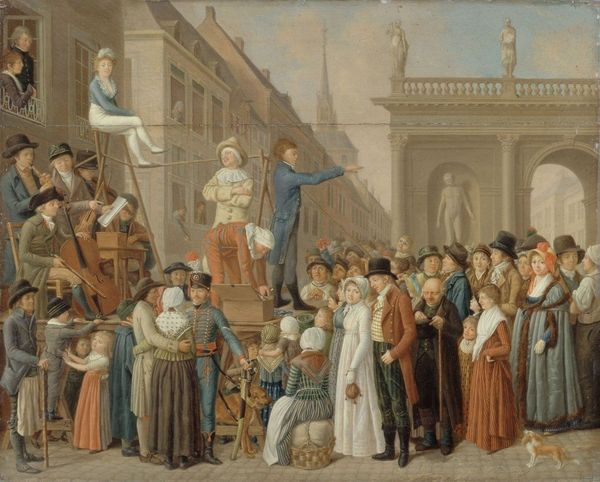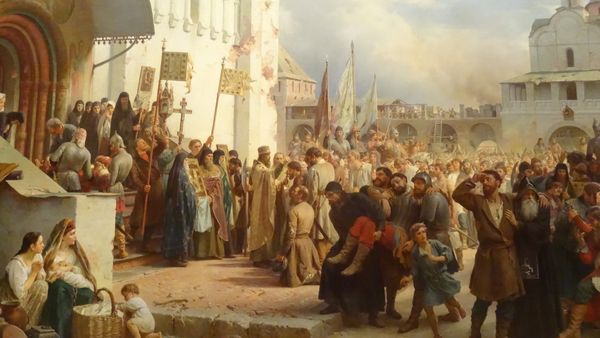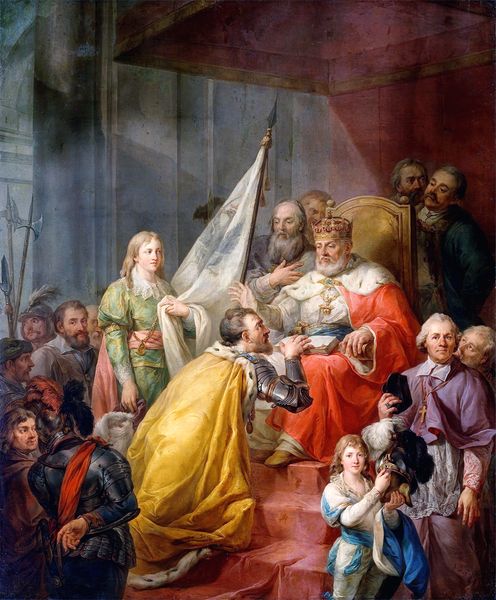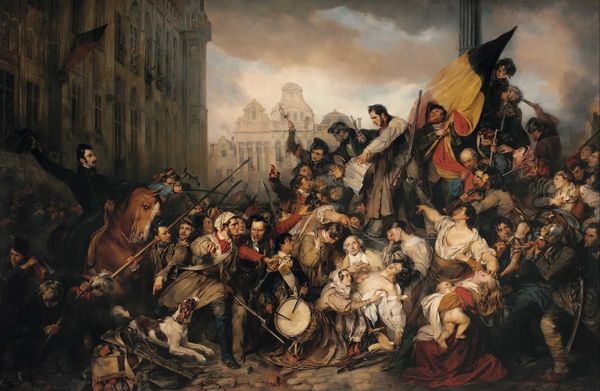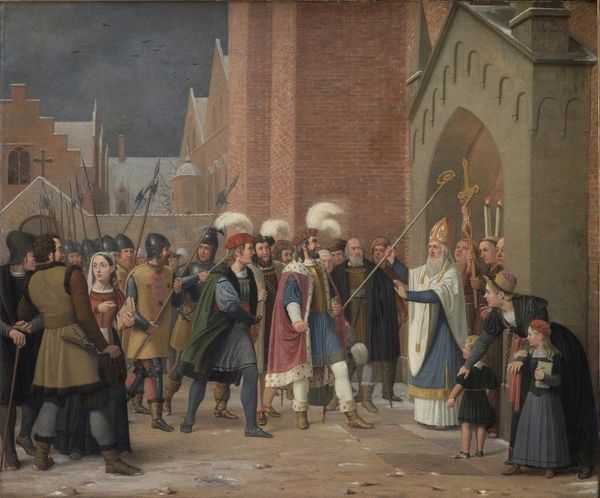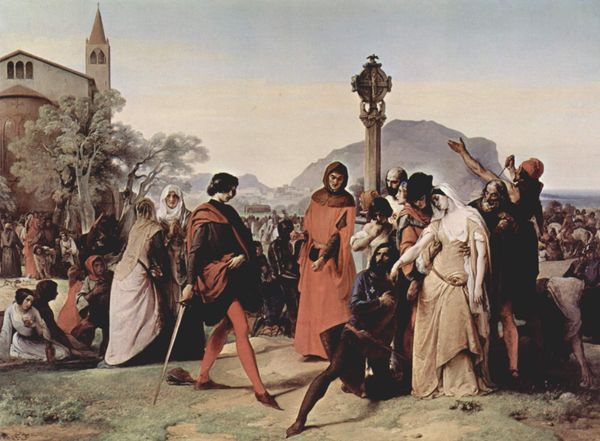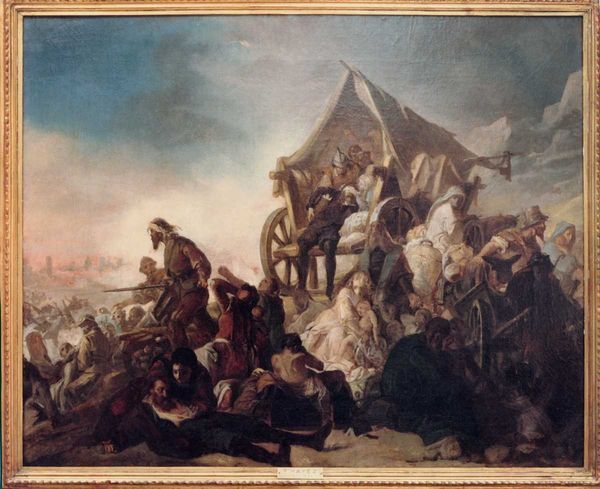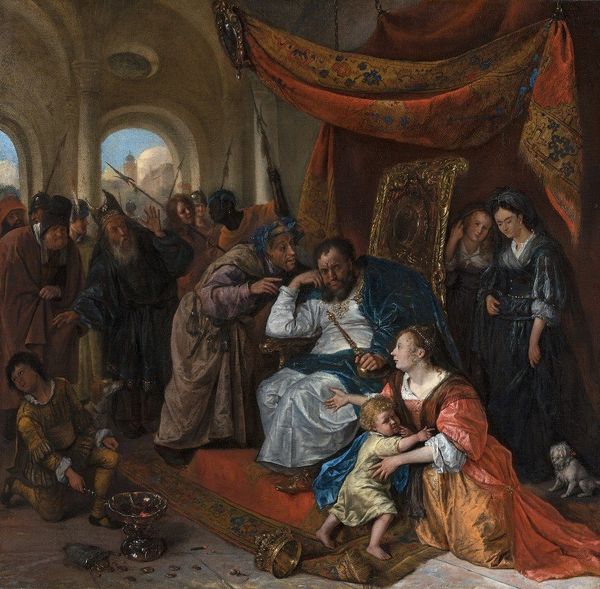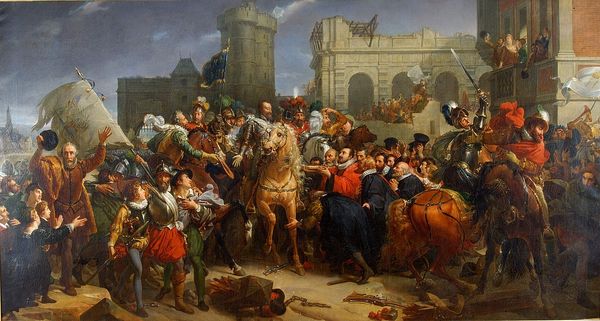
#
gouache
#
acrylic
#
possibly oil pastel
#
oil painting
#
acrylic on canvas
#
underpainting
#
painterly
#
painting painterly
#
watercolor
#
fine art portrait
Copyright: Public domain
Curator: I find this work, entitled "Blessing," painted in 1859 by Ferdinand Georg Waldmüller, instantly compelling in its devotional solemnity. Editor: It's a rather sweet scene, isn’t it? The soft focus and lighting create a peaceful atmosphere, despite the clear pomp and circumstance of the procession. The muted colors lend it a gentle, almost nostalgic quality. Curator: Absolutely. Looking closer, one can appreciate Waldmüller's careful attention to detail in depicting the fabrics – the heavy brocade of the priest's vestments, the simpler homespun clothing of the peasantry, and the brilliant scarlet worn by the young assistants, most likely crafted from madder-dyed wool or perhaps even the more costly cochineal. The materiality really roots it in its specific time and place. Editor: And look at the symbolism he's woven in. The elevated canopy suggests divine protection, while the upward gazes of the figures—especially the children—evoke faith and hope. Even the banners feel charged with historical and religious meaning, silently proclaiming power. Curator: These symbols only take on significance, of course, within specific social structures. Waldmüller's depictions often focus on the daily life of rural communities. We can imagine the labor involved in producing everything seen here, the tailored fabrics and crafted religious accoutrements. How do those material considerations reflect on societal hierarchies being played out here? Editor: The act of blessing is central to Christian iconography—a visual expression of divine favor bestowed upon the community. Note the hands of the priest; that small gesture is visually arresting. What strikes me is how Waldmüller captures the varied reactions of the onlookers—some are deeply reverent, while others, perhaps burdened by earthly concerns, appear more contemplative. Curator: Yes, and the underpainting would reveal so much about his technique—the layering of colors to create such rich textures, and choices about what locally sourced pigments to employ, could deepen our understanding of his methods and the art market that supported him. Editor: In closing, it seems Waldmüller has managed to capture not only a specific religious moment but also the timeless human yearning for connection with something greater. Curator: A fitting reflection of how artistic expression, and even devotional practice, is deeply rooted in materiality and production.
Comments
No comments
Be the first to comment and join the conversation on the ultimate creative platform.
